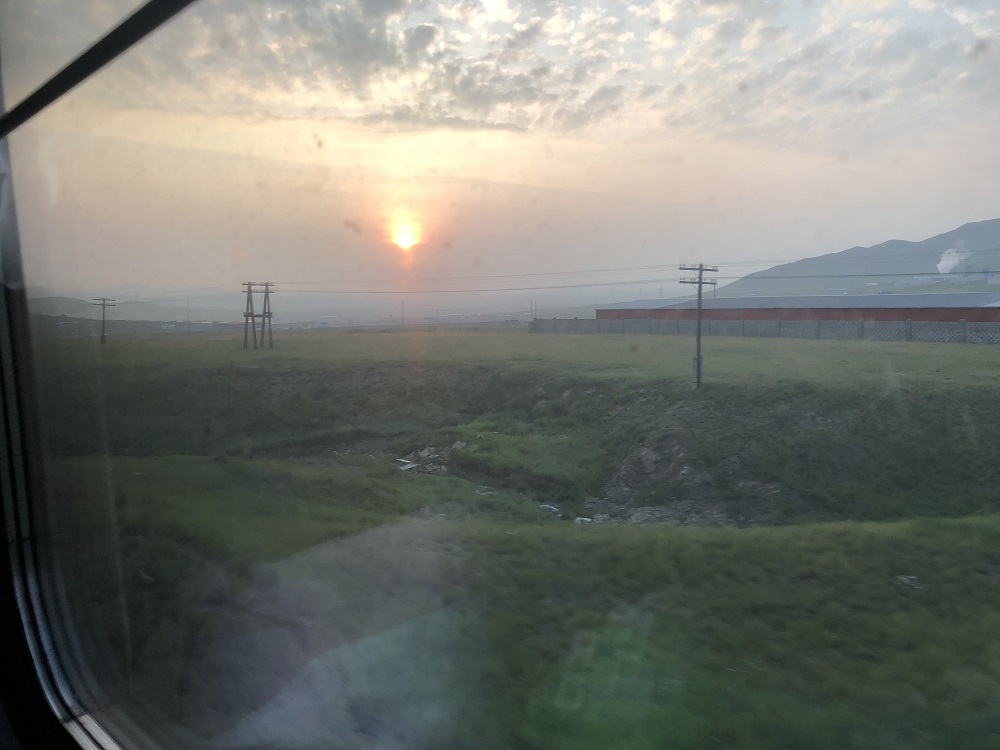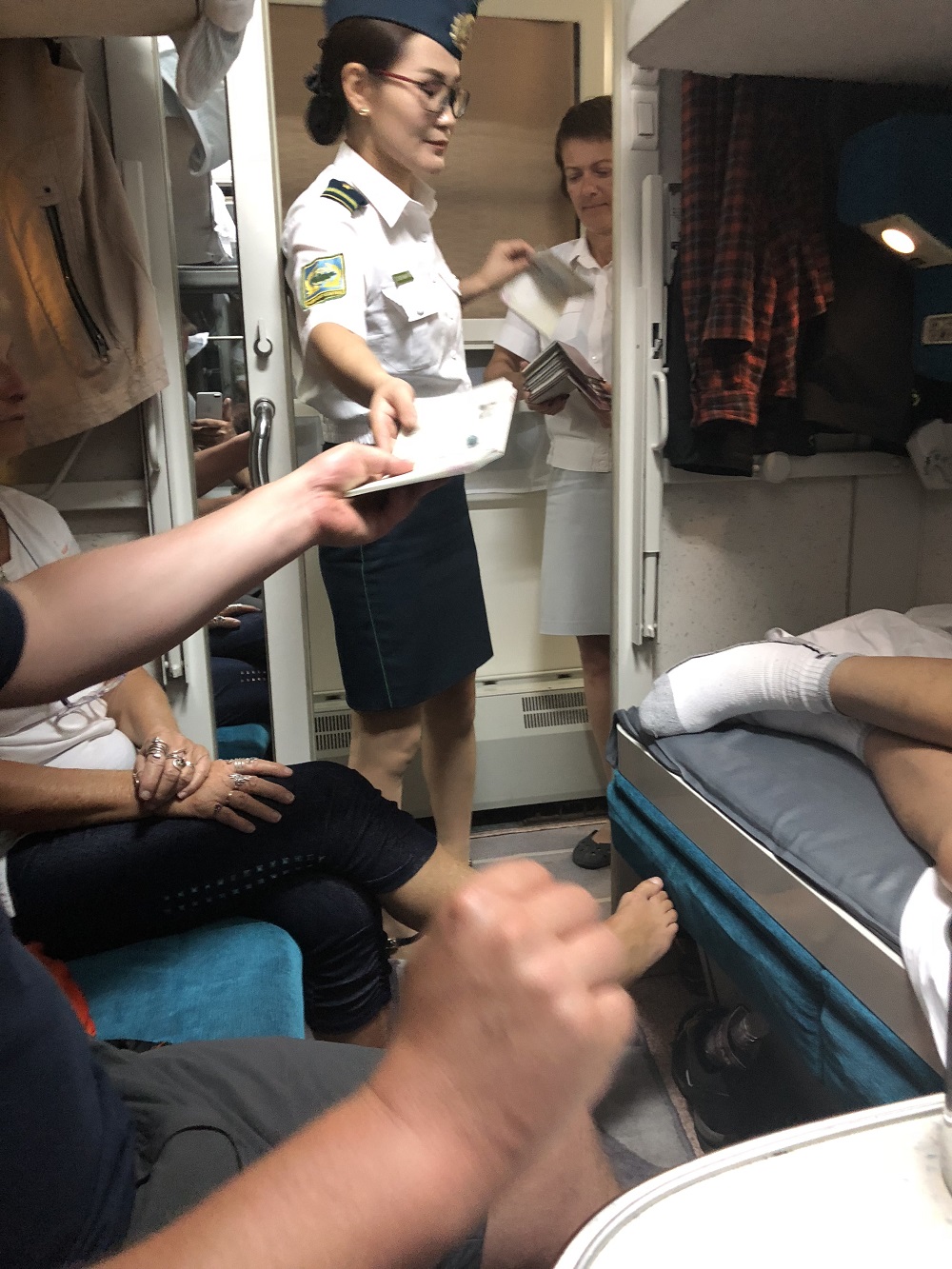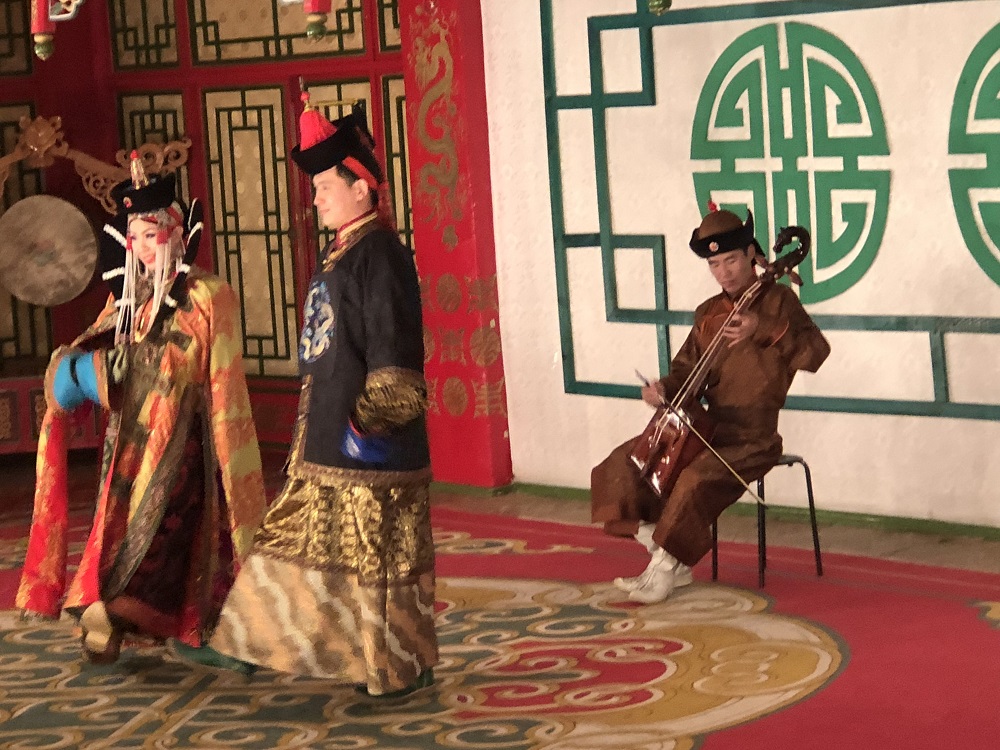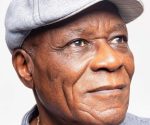The Great Train Journey – part 3

By Hilbert Haar
We leave Irkutsk on a Monday morning – rising early because the train leaves shortly after 8 a.m. for a trip of 22 hours to Ulanbaatar, the capital of Mongolia.
Our cabin is more luxurious than the one on the train from Moscow to Irkutsk and our travel companions are Andreas, a young Pole and his father-in-law Jan; at age 73, Jan’s age mirrors that of his son-in-law who is 37. A trader in fuel, he is married to Paulina though he spends quite some time away from her traveling the world. So far, he’s hit sixty different countries.
Andreas is a useful source of information, because he’s been in Mongolia before, so we lap it all up.
On the train, only alcohol-free beer is for sale, but Andreas has a solution for that too: he produces a bottle of red Baikal vodka; it mixes nicely with the beer.
Traveling by train, there is not much else to do than talking, sleeping, drinking and occasionally admire the vast Russian countryside. At three in the afternoon we approach Ulan-Ude, the last outpost in Siberia before the Mongolian border.
It takes another 5,5 hours before we experience the first border control; it’s done twice: first by the Russians, then by the Mongolians.
The train staff tells us we have to sit in our cabins and to put bags that are stored higher up on our bunk beds.
Then an immigration officers shows up to control our passports. It feels like he took his training in St. Maarten because he does not smile and manages to make the Germans in the cabin next to ours extremely nervous.
“Take your glasses off,” he says while he glares at me over my passport.
I smile but that appears to be the wrong thing to do. “Do not smile!” he barks, so I manage to match his sour facial expression.
Next thing we know a young kid in a black uniform sporting combat boots arrives. “Border control, get out please,” he says. At least the kid has manners.
The objective of his cabin-inspection remains a mystery. He hoists himself up to look at the small luggage compartment and the top bunk beds, then flips up the lower beds to take a look at the backpacks we have stored there. In twenty seconds it is all over and he has not seen a thing.
Then a rather attractive lady with shoulder-length hair stops by to make up for the intimidating behavior of her colleagues. With a pleasant smile she asks if anyone of us is carrying drugs, weapons or $10,000 in cash. Nobody does and she smiles again, saying she wished that she had that kind of money. Just another control that seems superficial but hey, who knows? Maybe the smiling lady is a trained psychologist who reads foreigners like a book.

An hour later we have our passports back. Half an hour or so later the whole spiel begins all over again but this time with Mongolian border control officers. Without incident, we get all the relevant paperwork and towards midnight the train starts finally moving again – in Mongolia.
A lady comes by with a handbag stuffed with tughriks, Mongolia’s currency. She offers 32 tughriks for a rouble, so I turn my remaining 14,000 roubles into 448,000 tughriks. Hmmm, one visit to an ATM and I’ll be a millionaire.
In takes some brain gymnastics to get used to this currency, because 2,500 tughrik roughly equals one dollar. Paying 15,000 tughrik for a lunch for two the next day sounds like a lot of money, but in reality it adds up to just six bucks.
Before we get to that lunch, at a spanking new outfit called Tous Les Jours, a rep of a tour company takes us and our Polish friends to our hostels. But the place we booked through the internet – Mongolian steppe – is such a dump that we decided practically on the spot to look for other accommodation.
In the end we find GobiGirl, an apartment in a highrise in the center that is actually run by a young mother of two called Boggy who is from Gobi. It’s spacious, clean and neat. We get a private double room for $30 a night, breakfast included.
The first night we go with our Polish travel companions to the Tumen Ekh theatre for a performance by the Mongolian National Song and Dance Ensemble. This is an unforgettable experience. The intimate theatre – built like the yurt palace of ancient Mongolian Khans – is packed with an estimated 250 to 300 people. The traditional costumes and instruments take you into another world, as do the long and short folk songs. What impresses me the most is khuumii (throat) singing by a singer who masters the whole spectrum of the human voice – and beyond. When he produces a whistling like sound – by singing, not whistling – my mouth fell open.

Anyone planning a visit to this charming yet so unknown country has to include the Tumen Ekh theatre in her or his itinerary.
Our travel plans are about to change drastically, because we are about to run into big trouble at the Chinese visa center. Before we’ll fly out of the country we have another adventure ahead of us: a trip into the vast Mongolian countryside.
I’ll keep you posted.
###
Top photo caption: The sun rises over Tӧv in Mongolia. Photo Hilbert Haar.
Mid photo caption: One of the friendlier Mongolian immigration officers takes a look at our passports at the border with Russia. Photo Hilbert Haar.
Last photo caption: The performance of the Mongolian National Song and Dance Ensemble is an unforgettable experience. Photo Hilbert Haar.























